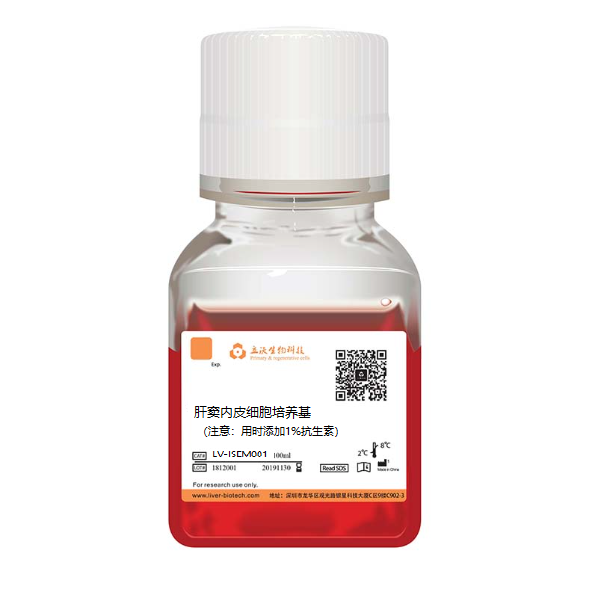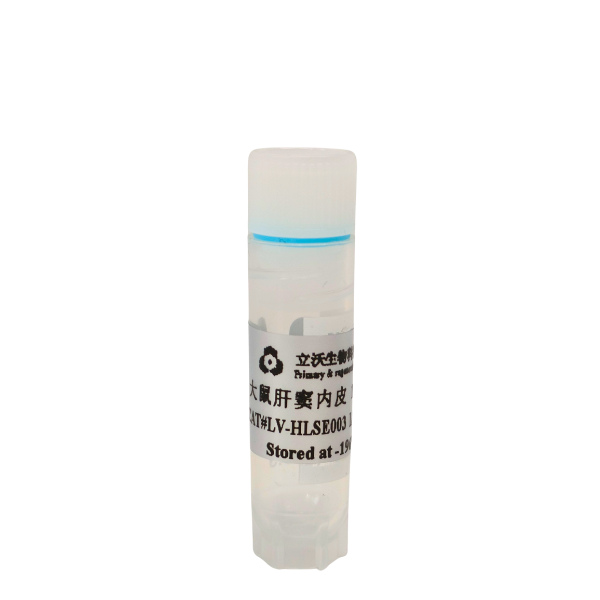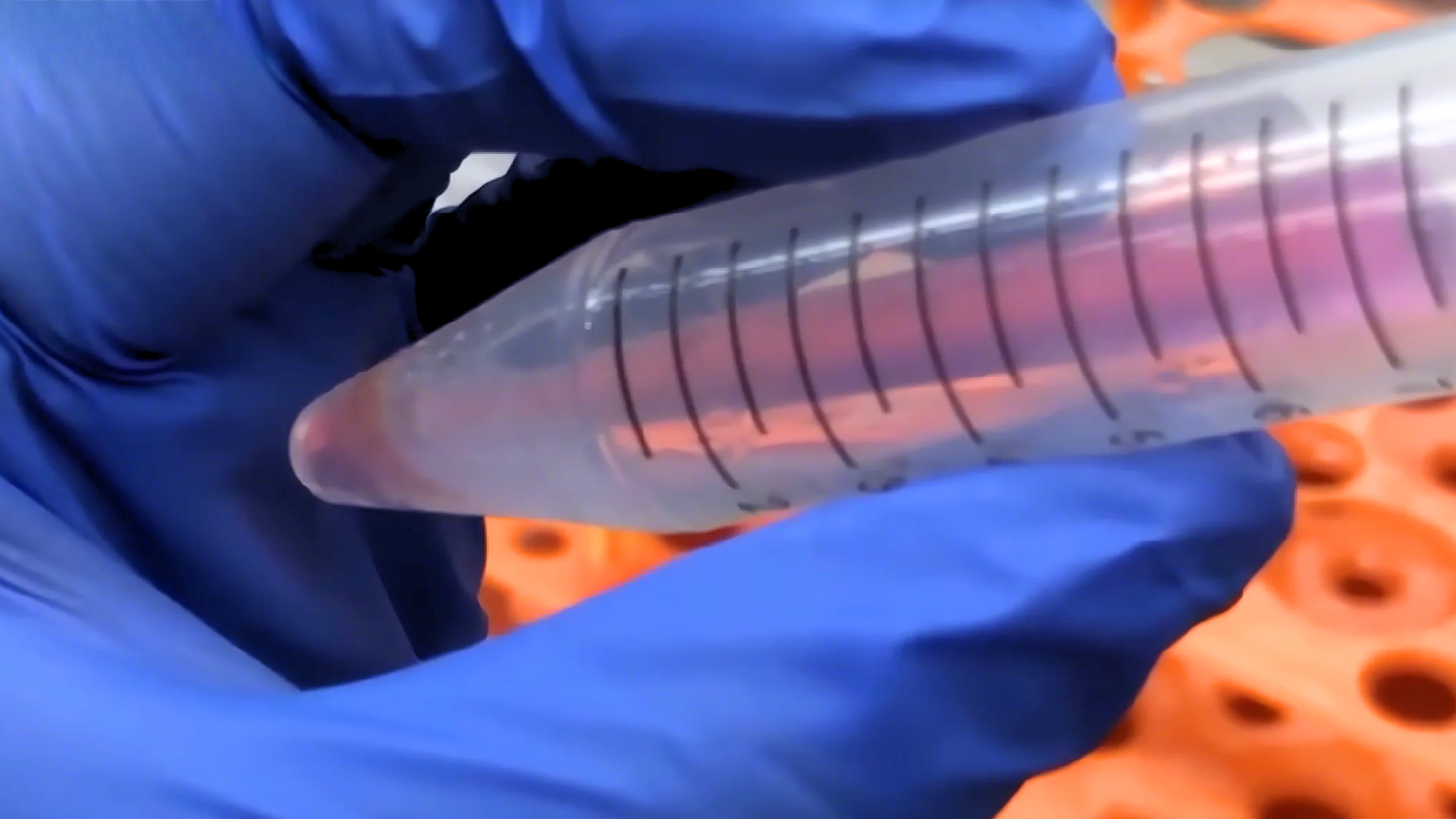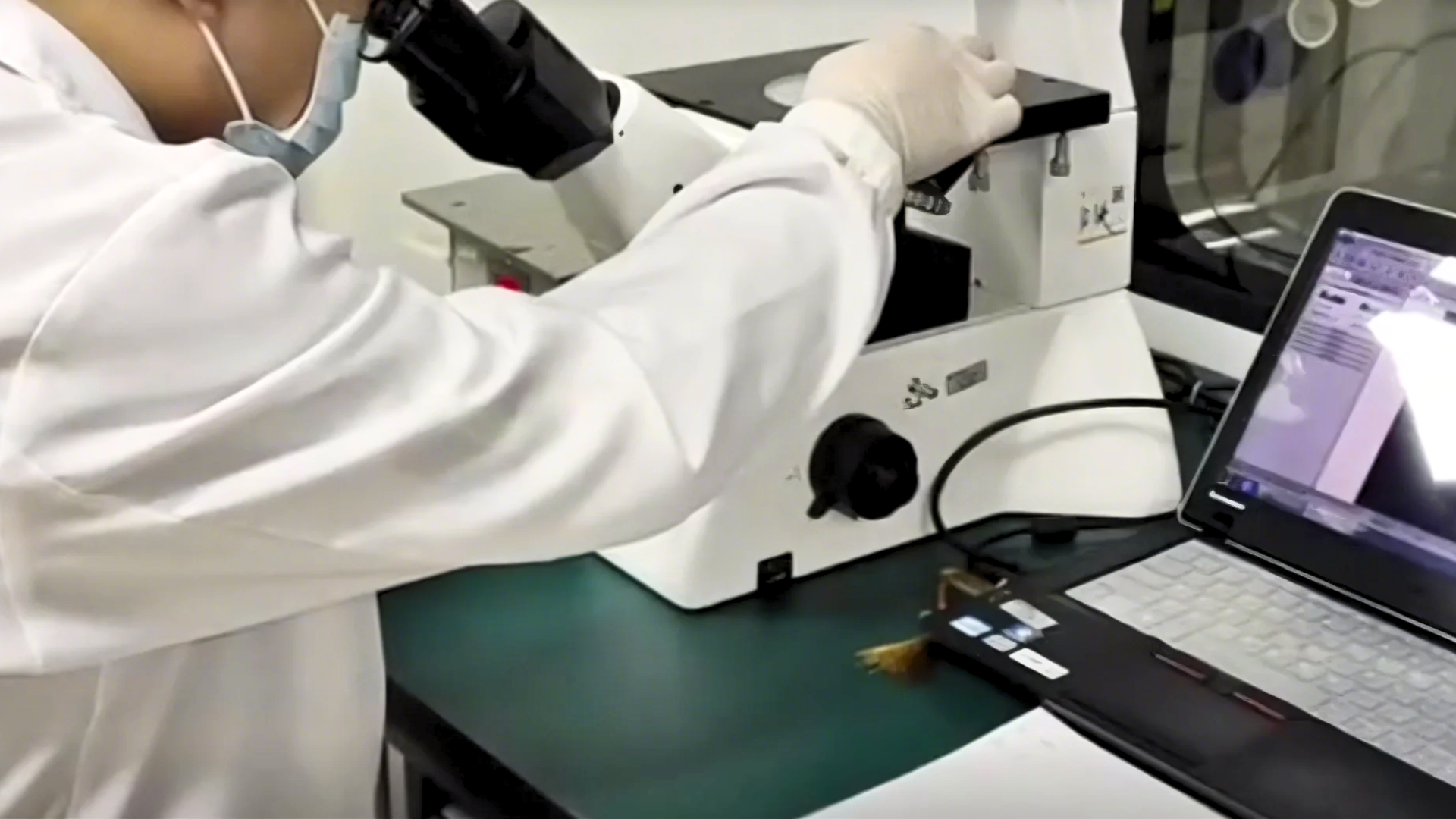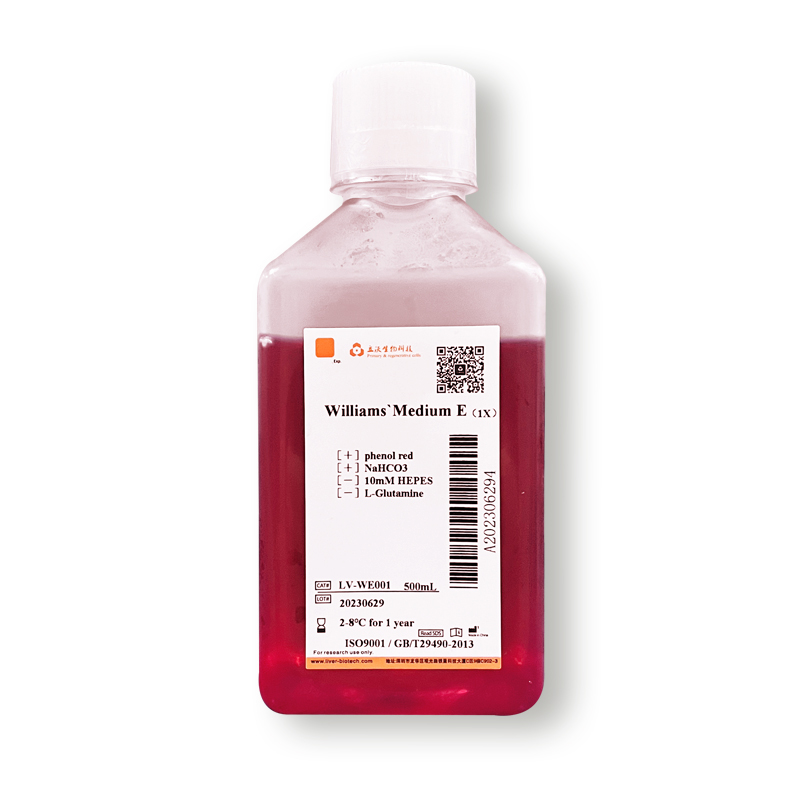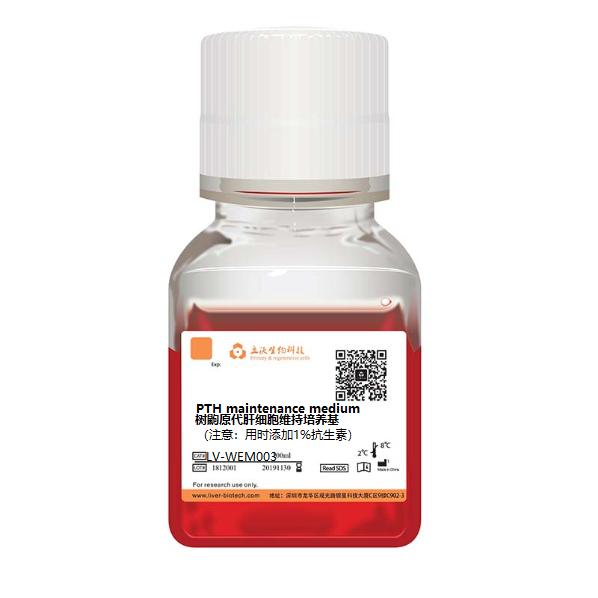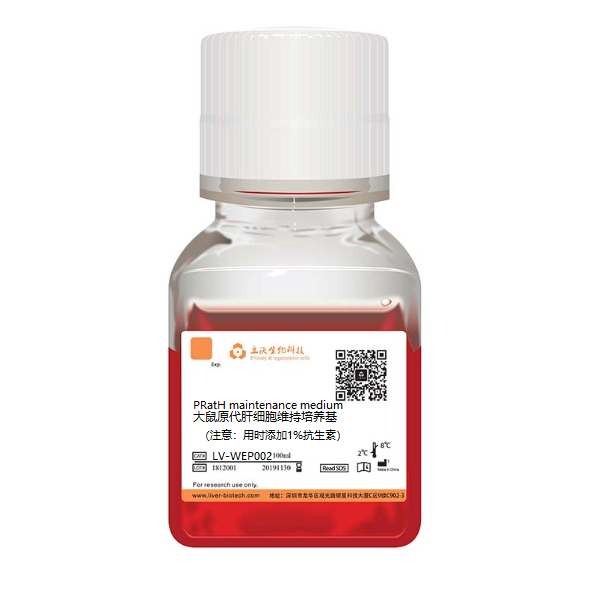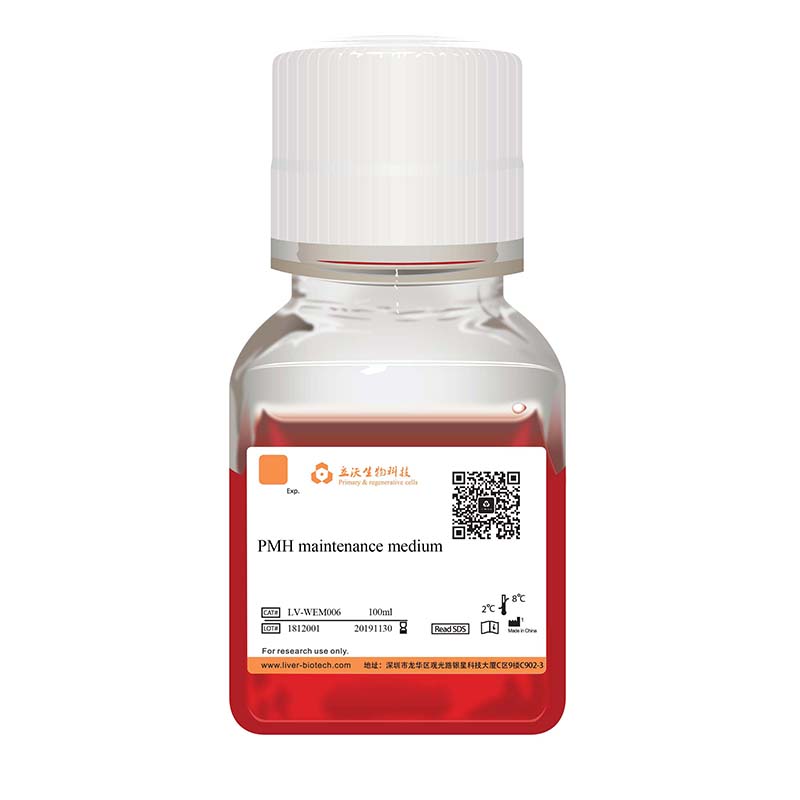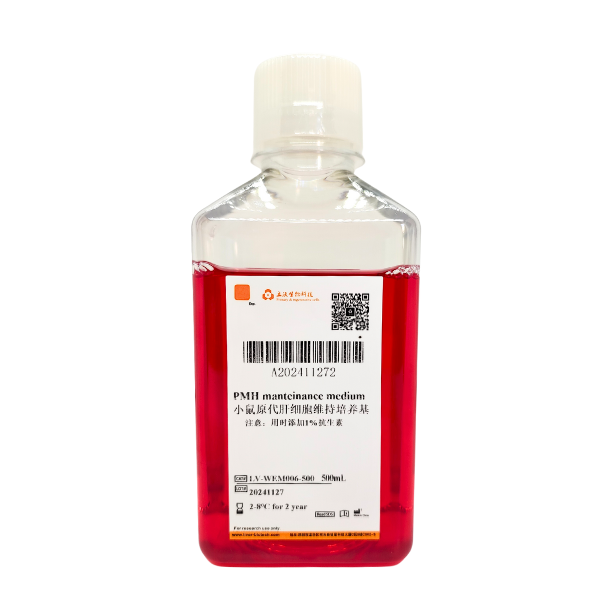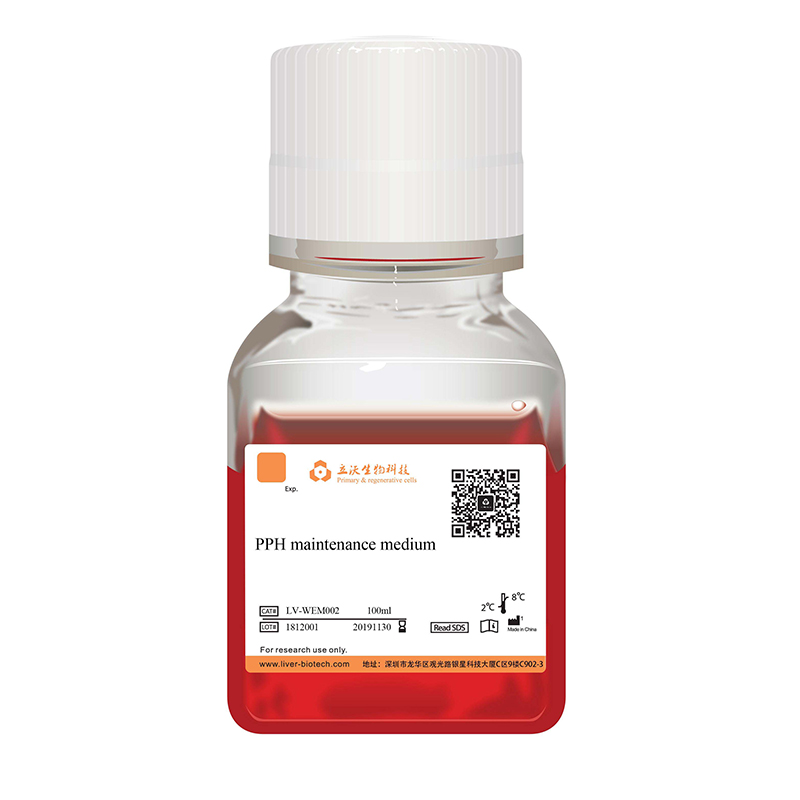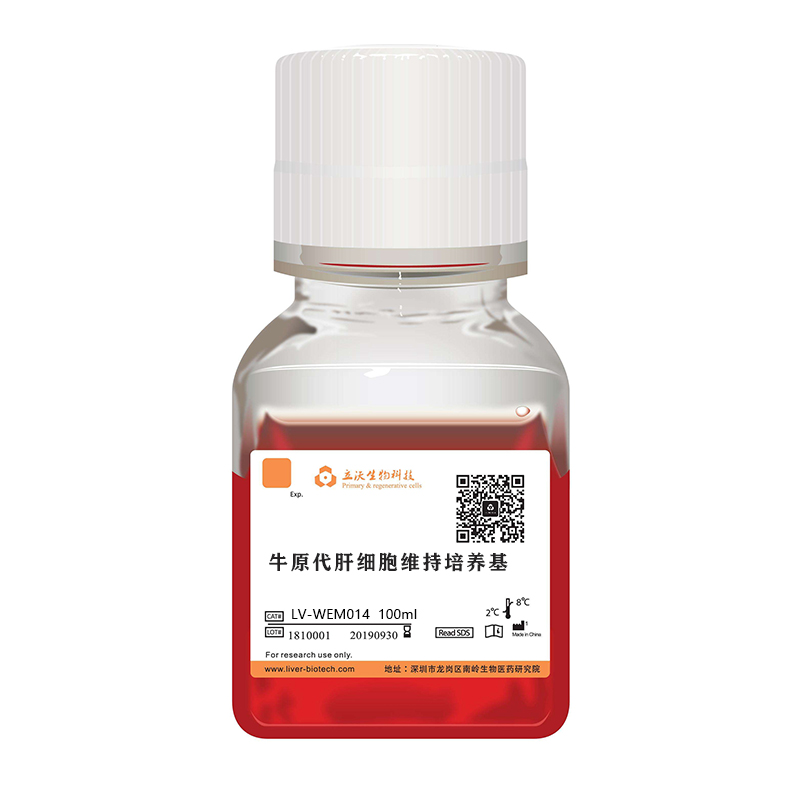Hepatic Sinus Endothelial Cells Culture Medium
Product Name:Hepatic Sinus Endothelial Cells Culture Medium
Item NO.:LV- LSEM001
Specs:100ml/bottle
Lead Time: 1 week
Storage Conditions:2-8℃
Transport Conditions:Low temperature or RT(Tested to have no effect on subsequent cell culture when transported at room temperature)
Shelf Life:2 Years
Product use:
1.this product is a sterile liquid, once found turbidity, please contact our sales immediately;
2.Remember to add 1% antibiotic before use, recommend 1% anti-anti;
3.This product is used for the maintenance culture of hepatic sinusoidal endothelial cells.





